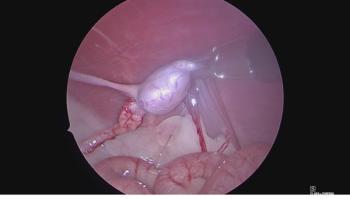
RCI rules on reducing phenylbutazone thresholds in racehorses
Several veterinarians voice their opinions on the new dosing rules
On Oct. 25, the Board of Directors of the Association of Racing Commissioners International (RCI) voted 16 to 0 in favor of lowering the threshold level for the nonsteroidal anti-inflammatory drug (NSAID) phenylbutazone from 5 µg/ml of plasma or serum to 2 µg.
The RCI’s Model Rules Committee suggested lowering the threshold for penalty for phenylbutazone-also called bute-to the board based on recommendations from the RCI Regulatory Veterinarians Committee, the RCI Drug Testing and Standards and Practices Committee, the Racing Medication and Testing Consortium, The Jockey Club’s Thoroughbred Safety Committee, The Jockey’s Guild, the Thoroughbred Owners and Breeders Association and the American Association of Equine Practitioners (AAEP).
“In the long run, it’s probably going to be better for horses and certainly better for racing,” says Larry Soma, VMD, Dipl. ACVA, professor of anesthesia in the Department of Clinical Studies at University of Pennsylvania’s New Bolton Center.
The literature pertaining to the use of NSAIDs in horses includes several indirect models. These models look at the depression of substances related to the inflammatory process (i.e., cytokines) to determine the course and magnitude of the response to various NSAIDs and doses.
“These studies suggest that in horses and ponies, at 24 hours after administration of the higher dose of phenylbutazone [2 g], there’s still an effect,” Soma says. “And most studies indicate that at 48 hours or with lower doses, the effect is less or gone.
“The recommendation that you go from a threshold of 5 µg/ml to 2 µg/ml of serum is probably going to be beneficial in the long run,” Soma says. “If it’s going to cut back on some of the injuries we see in racehorses, that’s positive, though there are many reasons why a horse becomes injured, and medication is just one possibility. We’ll see over the next year or so if the overall catastrophic or noncatastrophic injury rate is reduced at some of the racetracks.”
Soma says that for veterinarians to achieve the 2-µg level, they will need to cut the dose in half. Thus, instead giving 2 g of phenylbutazone the day before a race, they should give 1 g. Or if a veterinarian is going to continue with the higher dose of 2 g, the horse will have to wait at least 36 hours before it runs. “There are ways of doing this without interfering too much with the trainer’s regimen,” Soma says.
In Pennsylvania, where the ruling has been in effect since mid-September, Soma says that, as far as he knows, “the lab has not detected any overages, so all the horses have been at 2 µg/ml or below. The transition, so far in this state, has been very smooth.”
Practitioners’ perspectives
On the following pages are thoughts on this new ruling from equine practitioners who work within various racing jurisdictions.
Kathleen M. Anderson, DVM, Equine Veterinary Care at Fair Hill Training Center, Elkton, Md.
Works at racetracks in Maryland, Delaware, Pennsylvania, Virginia, West Virginia, New Jersey and New York.
I feel extremely well-informed on this issue because I practice within seven racing jurisdictions, and they all have different bute rules. It’s an action I’ve been expecting for a long time.
I don’t feel this is a hardship at all for horsemen or for practitioners. In my experience and for the horses that I deal with, I think the 5-µg level would rarely be approached on a treatment level. We tend to treat very similarly for all the racing jurisdictions because the appropriate amount usually ends up right around 2 µg. In my experience, very few horses would be negatively impacted by a little less bute-meaning I don’t think the majority of horsemen rely on high levels to get horses to the races.
Bute is like any anti-inflammatory given to any species. The benefit is that treated horses can be more comfortable, so they may avoid compensatory injuries. The downside is that some of the horses receiving phenylbutazone don’t do well metabolically, so those are the ones that can either be managed with medications such as omeprazole or not treated with bute at all. I treat a number of horses that would fit into that category. They don’t get bute; they don’t run on it. It’s not part of their programs.
Once the ruling goes into effect, we’ll find out quickly that higher levels of bute are unnecessary. Like with the use of anabolic steroids, nobody could live without them until they had to. This is just one more step toward uniformity among medications between jurisdictions. And it’s a good thing.
Scott Hay, DVM, Teigland, Franklin and Brokken, DVM’s, Fort Lauderdale, Fla.
Works at Calder Casino & Race Course, Miami Gardens, Fla., and Gulfstream Park, Hallandale Beach, Fla.
Under the rules we work with in Florida, the new threshold doesn’t change how we practice very much. Most of the horses, if administered 1 g of bute 24 hours before racing, should test below 2 µg. We may need to move our administration out a little further or reduce our dose marginally to keep the odd horse from getting an overage.
People are going to have to be more careful about how they use bute in their horses leading up to the day before a race. If they give 1 g 24 hours before racing, but after the horse has been receiving bute for several days, there may be an elevated serum level. That is a concern.
We work in Delaware within our practice, and they’ve been on a 2.5 µg rule. Everyone here is conscious to give bute before noon the day before the race just to make sure they keep their levels down.
As far as working with the rule, I think it’s very manageable. We’re just going to have to be careful to prevent overages.
Bryan Young, DVM, Young Equine Services, Cypress, Texas
Works at Lone Star Park, Grand Prairie, Texas; Remington Park, Oklahoma City; and Sam Houston Race Park, Houston.
I’m a member of the AAEP and its racing committee, and we support the reduced threshold level for bute. And as a practitioner, I support the reduced level.
There has been some anecdotal evidence this may contribute to a lower rate of breakdown injuries, and that’s good. Anything we can do to bring down that injury level is a good thing. From a practical standpoint, I don’t see threshold as affecting what I do. We give what I would refer to as appropriate doses of bute at appropriate times. As far as a pre-race medication and the way we practice here in Texas and Oklahoma, those levels are below the already existing threshold and would be below the recommended threshold.
I think where you’re going to see a change is in how the industry works, perhaps in training these horses on bute. Trainers won’t be able to use bute on a daily basis, especially leading up to a race, as they would with the previous threshold level. But as a matter of practice for me, it’s not going to change what we do much. I think from the standpoint of allowing the regulatory veterinarians an opportunity to look at these racehorses on race day, with a lower level of bute on board to give them a more accurate view, it’s a positive thing for racing.
I know some groups are opposed to the new threshold level, and I understand their concerns. A lot of the concerns come from worrying that, in these horses, there might be some bute overages with this lower threshold level. But I think as the industry adjusts to the lower threshold, it’s going to be better for everybody. I certainly understand their concern with the lower threshold levels. Certainly nobody wants bad tests, but I think, overall, it’s going to be a positive thing for racing.
Mary Scollay, DVM, member of the RCI Regulatory Veterinarians Committee
Works at Churchill Downs, Louisville, Ky., and Keeneland, Lexington, Ky.
As a regulatory veterinarian, I’m supportive of the change because this issue was brought to the RCI and the Racing Medication and Testing Consortium in the first place. The regulatory veterinarian is charged with the responsibility of determining whether a horse is fit to compete or not through a pre-race examination or inspection.
That inspection typically is done the morning of a race. There were concerns raised by my colleagues and myself regarding the ability to perform an accurate assessment if the horse were under the pharmacologic influence of NSAIDs. If the things that we’re looking for during a pre-race inspection in terms of heat, pain, swelling and inflammation were mitigated by the effects of medication, then we really couldn’t assess the horse’s condition.
I think the modification certainly helps address the concerns of the people performing the pre-race exams.
Ed Kane, PhD, is a researcher and consultant in animal nutrition. He is an author and editor on nutrition, physiology and veterinary medicine with a background in horses, pets and livestock. He is based in Seattle.
Newsletter
From exam room tips to practice management insights, get trusted veterinary news delivered straight to your inbox—subscribe to dvm360.




